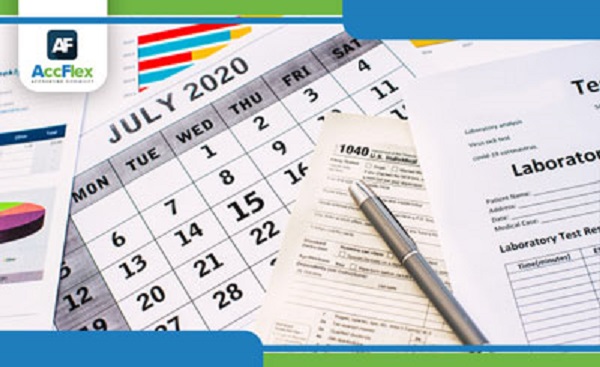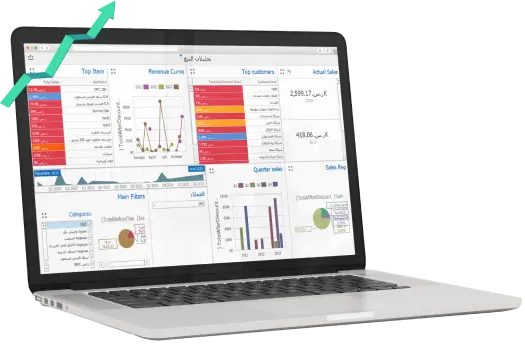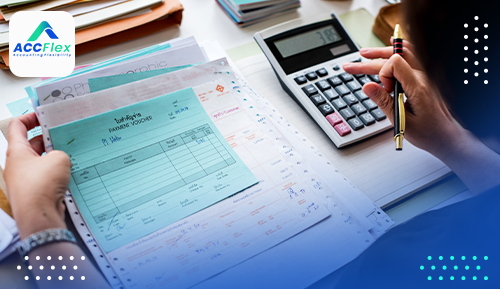The closing entries are the journal entries with which the income statement accounts are closed because they are temporary accounts, which are revenue and expenses, and the balance sheet accounts (assets and liabilities) carry forward to the next period after creating the adjusting entries
First, Sales
The sales are a credit and therefore when closed, they are on the debit side and the journal entry is as follows:
|
Account |
Debit |
Credit |
|
Sales |
XXX |
|
|
Income Summary |
|
XXX |
For sales returns and allowances, they are closed in the income summary account is as follows:
|
Account |
Debit |
Credit |
|
Income Summary |
XXX |
|
|
Sales Returns and Allowances |
|
XXX |
|
Sales Discounts |
XXX |
Then close the cost of goods sold account in the income summary account, and this account is a debit and therefore when it is closed it is a credit
|
Account |
Debit |
Credit |
|
Income Summary |
XXX |
|
|
Cost of Goods Sold |
|
XXX |
Closing the expense accounts
|
Account |
Debit |
Credit |
|
Income Summary |
XXX |
|
|
.......... Expense |
|
XXX |
|
.......... Expense |
XXX |
|
|
.......... Expense |
XXX |
|
|
.......... Expense |
XXX |
|
|
Board of Directors Salaries and Allowances |
XXX |
(Each line item of selling and administrative expenses, but operating expenses are closed in the cost of goods sold account in the case of industrial companies)
Closing the miscellaneous revenue account
|
Account |
Debit |
Credit |
|
Interest Income |
XXX |
|
|
Rental Income |
XXX |
|
|
Gain on Sale |
XXX |
|
|
Foreign Exchange Gain |
XXX |
|
|
Impairment Loss |
XXX |
|
|
Provision for Income Tax |
XXX |
|
|
Gain on Revaluation |
XXX |
|
|
Income Summary |
XXX |
Closing the miscellaneous expense account
|
Account |
Debit |
Credit |
|
Income Summary |
XXX |
|
|
Financial Expense |
XXX |
|
|
Foreign Exchange Loss |
XXX |
|
|
Impairment Loss |
XXX |
|
|
Provision Expense |
XXX |
|
|
Loss on Sale |
XXX |
|
|
Loss on Revaluation |
XXX |
|
|
Other Expense |
XXX |
Income Tax Expense
The accrued income tax closing entry is as follows:
Recording estimated income tax
|
Account |
Debit |
Credit |
|
Income Summary |
XXX |
|
|
Accrued Income Tax (Current Liabilities) |
|
XXX |
The tax expense is then closed in the income summary account by recording the next journal entry:
|
Account |
Debit |
Credit |
|
Income Summary |
XXX |
|
|
Income Tax Expense |
|
XXX |
Closing Entries – Periodic Inventory System
As for closing the inventory account, the principle is that the company uses the perpetual inventory system in the sense of recording each sale or purchase to the inventory account, in this case, at any time the company wants to know its balance, it is available and this is the best one currently in most companies
However, if the company uses the periodic inventory system, that is, it only the inventory opening balance and therefore, in this case, at the end of the fiscal period, the beginning inventory will be closed, the accounting treatment is as follows:
|
Account |
Debit |
Credit |
|
Income Summary |
XXX |
|
|
Inventory (Beginning) |
XXX |
The stock-taking is done and the inventory valuation
COGS = Cost of Goods Available for Sale – Ending Inventory
Ending Inventory = Cost of Goods Available for Sale – COGS
Cost of Goods Available for Sale = Beginning Inventory + Purchases
Recording ending inventory:
|
Account |
Debit |
Credit |
|
Inventory (Ending) |
XXX |
|
|
Income Summary |
|
XXX |
Closing Income Summary Account
For the joint-stock companies, net profit for the previous year (net profit after tax) it is allotted or distributed the percentage of the reserve requirement and the rest of the other reserves that the company has decided and the remaining amount is transferred to the retained earnings account
The accounting treatment is as follows:
|
Account |
Debit |
Credit |
|
Dividend |
XXX |
|
|
Reserve Account |
XXX |
|
|
General Reserve |
XXX |
|
|
Retained Earnings |
XXX |
For the sole proprietorships, income summary A/C is closed in the sole proprietorship in the owner's equity account so that:
1- For Profit:
|
Account |
Debit |
Credit |
|
Income Summary |
XXX |
|
|
Owner's Equity |
|
XXX |
2- For Loss:
|
Account |
Debit |
Credit |
|
Owner's Equity |
XXX |
|
|
Income Summary |
|
XXX |
Closing Balance Sheet Accounts
At the end of the year, after the statement of financial position is prepared, it will be closed journal entries by a reversing journal entry and the journal entry is as follows:
|
Account |
Debit |
Credit |
|
Current Liabilities (All GL accounts in the parent account) |
XXX |
|
|
Non-Current Liabilities (All GL accounts in the parent account) |
XXX |
|
|
Owner's Equity (All GL accounts in the parent account) |
XXX |
|
|
Non-Current Assets (All GL accounts in the parent account) |
XXX |
|
|
Current Assets (All GL accounts in the parent account) |
XXX |
At the beginning of the new fiscal year, a reversing entry is created by making the asset account a debit, the liability account, and the owner's equity a credit, these journal entries carried forward into the next fiscal year.
|
Account |
Debit |
Credit |
|
Non-Current Assets (All GL accounts in the parent account) |
XXX |
|
|
Current Assets (All GL accounts in the parent account) |
XXX |
|
|
Current Liabilities (All GL accounts in the parent account) |
XXX |
|
|
Non-Current Liabilities (All GL accounts in the parent account) |
XXX |
|
|
Owner's Equity (All GL accounts in the parent account) |
XXX |
Financial Statements Preparation Procedures
First, Fixed Assets
The physical inventory of machinery, vehicles, equipment, furniture, and stationery with the need to describe furniture and stationery according to the purchase invoices of the company at the end date of the fiscal year.
Second, Inventory
Preparing stock-taking committee for all company warehouses, the inventory records shall indicate the status of the inventory and classify it in a proper and defective and mention the type of defect in it and the percentage of defects to be taken into account when inventory valuation, as well as taking into account the stagnant, damaged and slow-moving inventory.
The matching between the physical inventory balances and the book balances of the warehouse at a time to examine the causes of the inventory differentials, if any, and working to adjust them properly.
Third, Cash Count, Notes Receivable, and Letters of Guarantee
Cash count after work ends on December 31, and depositing all cash receipts in the company on December 31, taking into account the necessity of liquidating the temporary petty cash of all types, as well as all accounts related to the treasury or the petty cash, if any.
Preparing inventory records for checks and notes receivable in the treasury on December 31.
Preparing a detailed statement of letters of guarantee.
Fourth, Bank Accounts
Notifying all banks that deal with the company by preparing certificates that include the balances of all accounts of all types of the company at the end of December 31, 2018, with a detailed statement of letter of credit, a detailed deposit statement, and the company preparing reconciliation for all its bank accounts.
Fifth, Accounts Receivables and Accounts Payables Reconciliation
Annual reconciliation is made with all accounts receivables and accounts payables, to ensure their matches, and to determine and know the differences, if any.
Sixth, Tax and Insurance Declaration
A note of the tax declaration is prepared in detail for all types of taxes separately for the company with the provision account for the taxes that may be due on them with the approval of that note from the company's senior management and also the social insurance authority.
Seventh, Insurance
The finance department of the company prepares a detailed statement of insurance policies against fire, theft, accidents, breach of trust, etc. provided that the name of the insured company, the policy number, the amount of the insurance, the subject matter of the insurance, the annual installment, the policy period, and the value of the insured asset (in the case of fire or theft insurance).
Eighth, Allowances and Remuneration of Members of the Board of Directors
The company's finance department prepares a detailed statement of all the remuneration, allowances, and others that the board members receive during the ending fiscal year.
Ninth, Other
- The company's legal department or the legal advisor (the lawyer) prepares a memorandum regarding all the action cases by or against the company or the company is a party to (attached to the request sent to the lawyer)
In all cases, it is necessary to:
Classification of cases according to their nature (labor- customer claims, supplier claims, or compensation claims by the company or third parties, etc.).
- The legal department of the company or the company's attorney mentioning the stage of litigation that the lawsuits have reached, as well as the opinion of the aforementioned department regarding the situation of each of them, the probabilities of the company's gain or loss, and the value of the financial liability that may result from it.
- Preparing a certificate approved by the company’s department indicating that all financial liabilities made by the company or obligated to them, whether in the form of notes payable or as a result of contracts or agreements concluded with third parties or against any goods received by the company in any form during the fiscal year ending on December 31, its value is fully and correctly recorded in the financial books.
Notes to the Financial Statements
The notes to financial statements are an integral part of the financial statements because they complement and clarify other components of the financial statements
When the auditor's report is finalized, then the financial statements are (statement of financial position- income statement- statement of comprehensive income- statement of changes in equity- cash flow statement) and thereafter the notes to financial statements are prepared which clarify information that cannot be presented in the financial statements, in addition to are very important when reading financial statements because they clarify a lot to the users of financial statements
First, business name or name of the undertaking, legal form, and registered office;
Secondly, the accounting policies section provides information on the accounting policies adopted by the management in preparing the financial statements, some of the disclosures included are the depreciation method used, how the company values inventory, accounting for intangibles, revenue recognition policy, policy for borrowing costs and are they allocated as an expense or interest capitalization, recording and evaluating investments policy, provisions, as well as financial instruments and risks associated to financial instruments such as interest rate risk, credit risk, liquidity risk, foreign exchange risk, financial leasing, as well as related-party transactions
Third, detailed data for the components of the financial statements in the sense of analyzing the figures in the financial statements, for example
1- The total figure that appears in the statement of financial position of fixed assets are prepared the note and consolidated statement of each class or is line item of fixed assets such as land, buildings, construction, machinery, equipment, vehicles, furniture, and stationery, and the note clarifies the cost of each class of fixed assets and the cost of additions of the year and the transferring from assets under construction, disposals, and accumulated depreciation (Accumulated Depreciation at the Beginning of the Period + Depreciation Expense for the Period – Accumulated Depreciation on the Assets Disposed Of)
Asset Net Book Value = Gross Cost of Asset – Accumulated Depreciation, the book value of the previous year is also appear for comparison
In case there are depreciated asset by book and they are still operating, this is also clarified in the case of an asset mortgage, this shall be clarified
It is preferable to clarify the depreciation separately
For the assets under construction, they are divided into line items and an opening balance
Opening Balance + Additions – Transfers of Fixed Assets
For inventory, it appears in the balance sheet with a total number but in the notes, the balance value of each line item of inventory is presented such as the raw material warehouse, packaging warehouse, spare parts warehouse, finished product warehouse, and work in progress, etc., is presented also the previous fiscal period figures for comparison as well as the inventory impairment is subtracted from inventory balances and net figure appears in the statement of financial position
The rest of the financial statements line items are analyzed these figures so that the notes clarify to the financial statements reader of each figure in these statements









